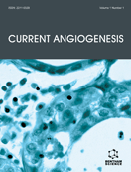Abstract
As in normal tissues, solid tumors depend on vascular networks to supply blood, oxygen, and nutrients. Tumor blood vessels are formed by common processes of neovascularization for example endothelial sprouting. However, some tumors have alternative and unexpected mechanisms of neovascularization at their disposal. In a process termed "vascular mimicry," tumors create their own, tumor cell-lined channels for fluid transport independent of typical modes of angiogenesis. These tumor cell-lined conduits may express endothelial-selective markers and anti-coagulant factors which allow for anastamosis with host endothelium. In this review, we explore the current status of vascular mimicry research, highlighting recent evidence which strengthens the hypothesis for this unusual ability of tumor cells. Furthermore, we address the theoretical possibility that vascular mimicry provides a mechanism whereby tumors could escape antiangiogenic therapies.
Keywords: Vascular mimicry, tumor, angiogenesis, tumor endothelial cells, tumor microenvironment, Anti-Angiogenic Therapy, neovascularization, intussusception
 3
3

